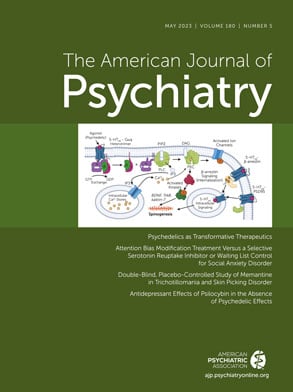Treatment Issues Related to the Use of Psychedelics, Trichotillomania, Social Anxiety Disorder, Schizophrenia, and Opioid Use Disorder
Assessing the Efficacy of Memantine for Treating Trichotillomania and Skin Picking Disorder
Treating Social Anxiety Disorder: Eye-Tracking-Based Attention Modification Bias Training Versus an SSRI
Testing the Efficacy of a Novel Treatment for Motivation-Related Negative Symptoms in Schizophrenia
A Within-Participant, Longitudinal Assessment of Antipsychotic Monotherapy Versus Polypharmacy in Relation to Nonpsychiatric Hospitalizations
Identifying Factors Associated With Overdose During Medication Treatment for Opioid Use Disorder
Conclusion
References
Information & Authors
Information
Published In
History
Keywords
Authors
Funding Information
Metrics & Citations
Metrics
Citations
Export Citations
If you have the appropriate software installed, you can download article citation data to the citation manager of your choice. Simply select your manager software from the list below and click Download.
For more information or tips please see 'Downloading to a citation manager' in the Help menu.
View Options
View options
PDF/EPUB
View PDF/EPUBLogin options
Already a subscriber? Access your subscription through your login credentials or your institution for full access to this article.
Personal login Institutional Login Open Athens loginNot a subscriber?
PsychiatryOnline subscription options offer access to the DSM-5-TR® library, books, journals, CME, and patient resources. This all-in-one virtual library provides psychiatrists and mental health professionals with key resources for diagnosis, treatment, research, and professional development.
Need more help? PsychiatryOnline Customer Service may be reached by emailing [email protected] or by calling 800-368-5777 (in the U.S.) or 703-907-7322 (outside the U.S.).

